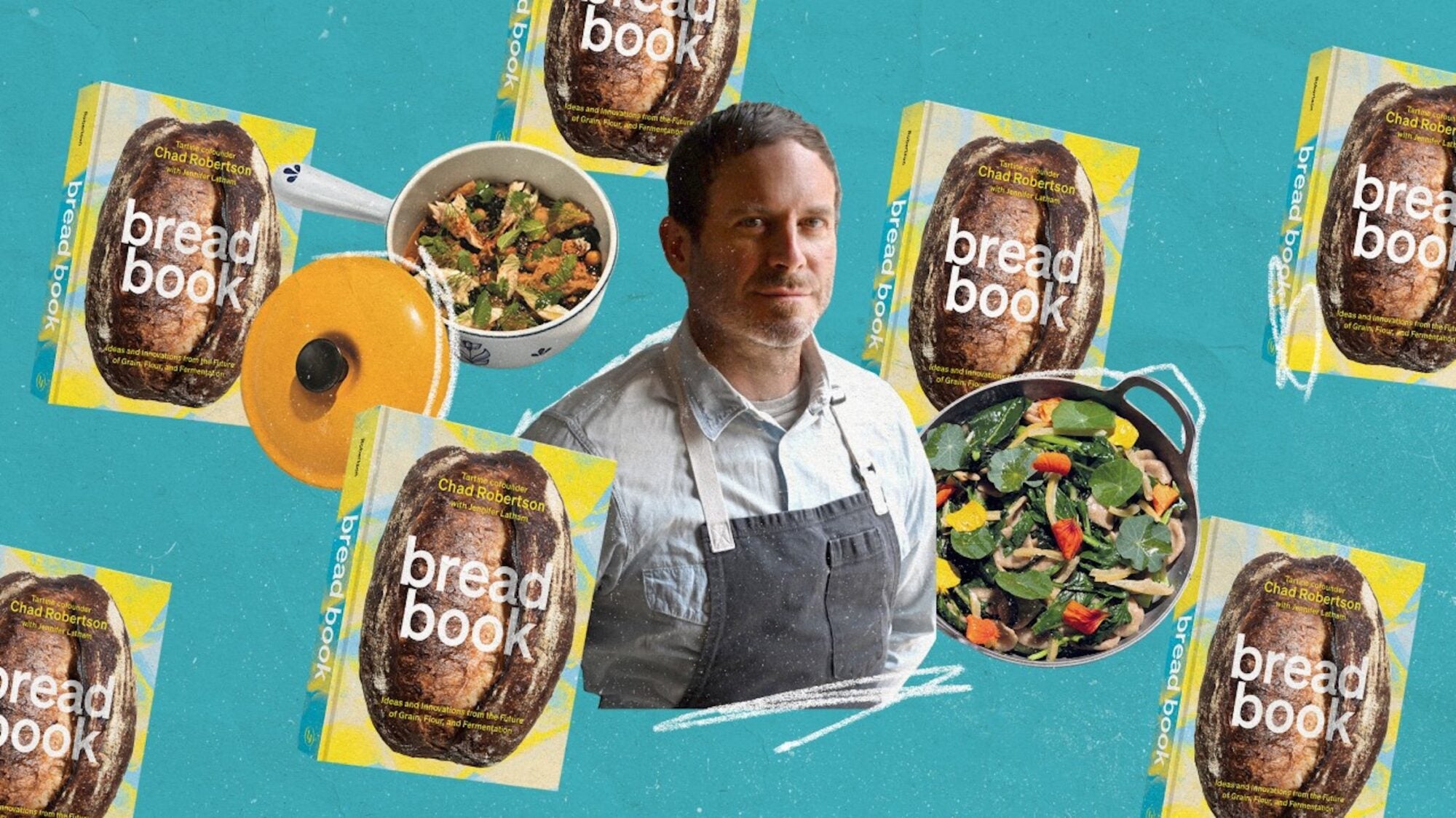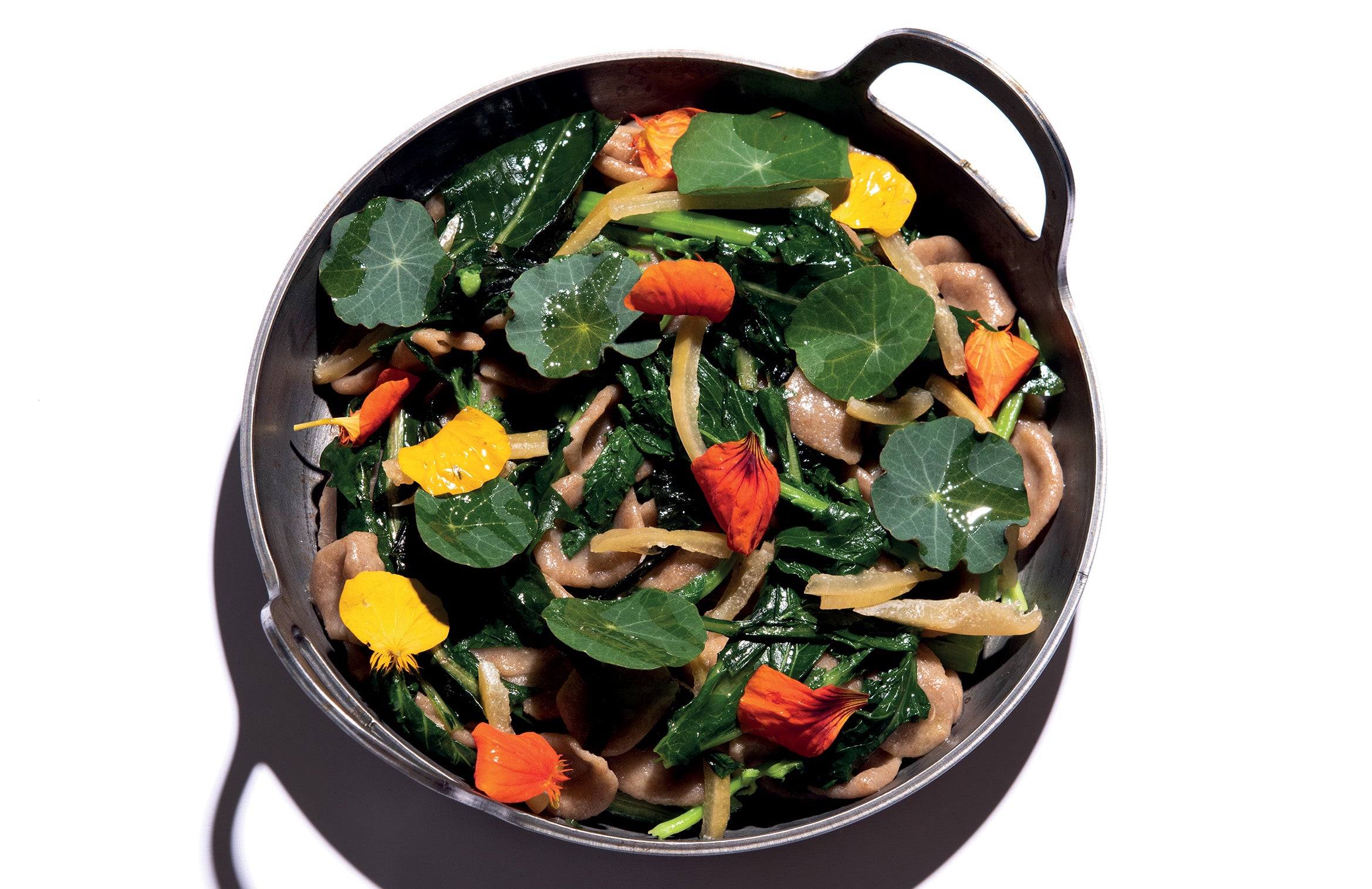
Tartine cofounder Chad Robertson’s latest cookbook makes the case for sourdough leaving the loaf and entering tortillas, pizzas, and fresh pastas.
Almost twelve years ago, before all those tech bros started baking, and before a pandemic created thousands of new sourdough hobbyists, Chad Robertson wrote Tartine Bread. The practice of baking bread with natural leavening, of course, was thousands of years old, but the idea of baking crusty, dark-amber loaves of sourdough in a home kitchen was still relatively novel for even the experienced baker. The book inspired a whole generation to buy digital scales, to pick up bakers’ lames, and to create and diligently nurture starters of their own.
Between then and now, the cofounder of San Francisco’s Tartine Bakery has baked a lot of loaves—and learned a lot of lessons about sourdough. His latest book, Bread Book, shares some of these breakthroughs and innovations. There are techniques for baking with alternative grains and without gluten, as well as approaches for bringing sourdough into fresh cavatelli and crackly crispbreads. And once you’ve baked a perfect (or, honestly, near perfect) loaf, there are caviar sandwiches, chickpea stews, and tartines to turn those loaves into.
Your book Tartine Bread came out a little more than a decade ago, and at-home sourdough baking has obviously reached meme levels of popularity in the past two years. What do you think flipped the switch?
Since then, there are a lot more great instructional bread books out there, and people everywhere making good bread celebrating regional grains—it’s super inspiring to me and our teams.
Over the pandemic, lots of us (for better or worse) had more time on our hands at home to dive into projects. Making sourdough bread was one of the most popular adventures, coinciding with more access to information, regional grain ingredients, and instruction from both books and all sorts of social media. These days, you can find a video depicting almost anything you want to learn to do.
You write that the most rewarding thing about baking bread is that you’re constantly learning. What are some of the newer lessons in bread baking that made their way into this book (that weren’t part of your previous books)?
In this new book, we build on lots of basic building blocks we detailed in earlier books. In a way, it’s expanding the world of how we use grains to make doughs with different hydrations, different fermentation schedules: inoculation percentage, temperature, shaping, and finally how we bake or cook the dough, utilizing it in new ways that we love to make some of the most popular foods more flavorful, nutritious, digestible, and accessible.
I’m trying to make the expansion of this bread perception easier to wrap our minds around as readers new to these ideas.
At the same time, I’m trying to make the expansion of this bread perception easier to wrap our minds around as readers new to these ideas. For example: our new take on the country loaf, pizza, pasta, flour tortillas, and thin crisp crackers all start with the same basic ingredients of flour, water, salt, and natural leaven, and we end up with very different food items in the end.
You talk about scalding flour with a little bit of water to help along the gluten structure of a dough and make the resulting loaves softer, fluffier, and more long-lasting (the way the tangzhong method makes softer milk bread). What types of bread are good candidates vs. bad candidates for using the scalding trick?
This technique I am pretty obsessed with—we have used it in so many different doughs. Good candidates are pretty much any dough that will be baked into loaves or buns, and many grains or flours with less or no gluten can really benefit from the structure gained using the scalding method correctly.
The book gives some great guidance on how to create and maintain sourdough starters, how to feed the starter with different types of flour, and even how to build a gluten-free starter. Are there any types of flour that people really shouldn’t be feeding their starter with?
My general, oversimplified rule is to use flour that is freshly milled and high extraction (not super refined white flour), with a taste and smell that you like. After it starts fermenting, you will need to judge factors from there on your own: how fast it sours, how quickly it breaks down and liquefies, et cetera.
I’ve never thought to incorporate sourdough starter into a pasta dough, but this was a cool feature of Bread Book. What are the taste or texture or nutrition advantages here?
Pasta is traditionally made from pretty hard, high-gluten wheats—in Italy, it is durum or semolina, and there are over 300 varieties of just this type of wheat. Pasta has a traditionally low hydration, especially extruded pasta. Adding sourdough in a small percentage and letting this semidry pasta ferment cold overnight in the fridge for a day or two adds a subtle savory note to the flavor—not sour at all, but a pleasant layer you’d miss if it wasn’t there, while rendering the finished pasta much more digestible.

THREE EXCITING RECIPES FROM BREAD BOOK:
Rye Cavatelli and Orecchiette
A touch of sourdough discard brings some savory depth to this pasta dough.
Rye Orecchiette with Flowering Broccoli Rabe, Preserved Lemon, and Garden Greens
A few garden greens and herbs bring a batch of rye orecchiette to life.
Chickpea Stew
Turn your stale bread into a warming chickpea stew, topped with canned olive oil–packed tuna.